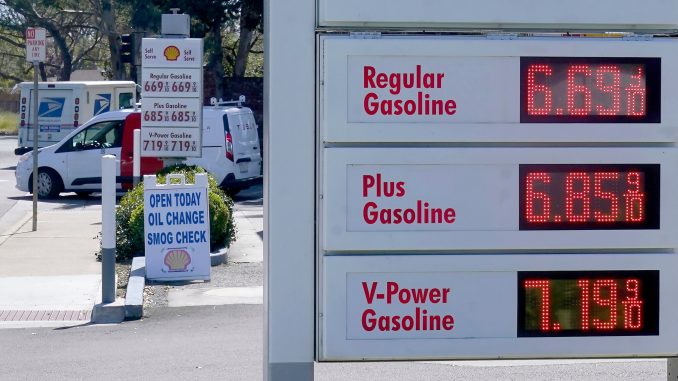
Gas prices have been skyrocketing and affecting consumers all around the United States. Prior to the pandemic, prices ranged from $2.40 per gallon and up, but nowadays the average is around $4 a gallon. This phenomenon is shocking airline companies, truck transportation and the everyday consumer — everyone is affected.
The ongoing dispute overseas between Ukraine and Russia has caused the United States to be cut off from Russia’s oil supply, which is the third largest producer in the world. Although Russia only supplies about 8% of all United States oil, it’s still a devastating loss of raw material that is in very high demand, which causes prices to fluctuate.
Drivers are shocked when they arrive at the gas station and end up paying upwards of $70 to fill up their tanks. The last time consumers dealt with such a period of sharp price increases was when the global economy came undone during the 2008 financial crisis.
Some consumers believe that going on a certain day of the week or certain time will dictate how expensive the price of gas is. Experts have come to the conclusion that Monday is the day of the week with the cheapest gas, with Friday in close second. The busiest times at the pump are between 4:00 p.m. and 6:00 p.m.
Although some people are blaming President Biden for this increase in price, oil and gas drilling has increased under his leadership. The real hardship lies within companies in the U.S. having difficulties with funding for supplies and labor. It is anticipated that prices may continue to rise as the increase of demand for oil continues. Prices have already stretched above $5 per gallon in the West Coast, and will continue to elevate for weeks if not months.
Underneath the Gulf Coast in salt caverns, the U.S. has stored 700 million barrels of petroleum, known as the Strategic Petroleum Reserve. This amount is able to fuel the whole country for one month, and President Biden has already allowed fuel to be taken from the reserve twice. This is a last resort fuel source and the fact that we’re tapping into it is concerning.
Most refineries in the U.S. were built before the domestic oil boom that turned America into the world’s largest producer of oil, which means they function slower than newer and more technologically advanced refineries do. The process is a bit slower and the oil produced contains lower levels of sulfur than others.
Russia’s war in Ukraine has increased oil prices around 20%, hurting consumers in America and shocking the economy. The average worker’s salary isn’t enough to support the rising costs of oil, and many people are opting for alternative modes of transportation that don’t require gas.
New adjusted lifestyles are becoming more normalized, and there is a very high demand for electric vehicles. Teslas, in specific, are somewhat unattainable at the moment and unavailable for purchase until after 2023. It’s shocking to see how the global crisis affects other areas of the economy. In some areas where this is unavailable, people are opting for electric scooters for transportation and they are becoming very high in demand. In addition, scooter rental app-based programs are becoming more available and are gaining popularity among consumers.
For every $10 increase in the price of oil per barrel, gasoline prices typically rise by 24 cents per gallon. After the initial spike earlier in the month, prices have begun to fluctuate, but remain consistent around $4 per gallon. Americans are concerned about their ability to keep up with the rising costs of gasoline, and are hoping to find easier ways to get around.
Gasoline used to make up 3% of a consumer’s budget, but as the price is increasing it is becoming closer to 6% of a consumer’s budget. This influx in price is unattainable for the average consumer to keep up with, as their normal salary remains the same.
President Biden stated, “today’s inflation report is a reminder that Americans’ budgets are being stretched by price increases and families are starting to feel the impacts of Putin’s price hike,” after the Labor Department announced that prices rose 0.8% in February and 8.4% over the last three months.
As the coming weeks of prices are uncertain, consumers are hoping for prices to become stagnant again.

